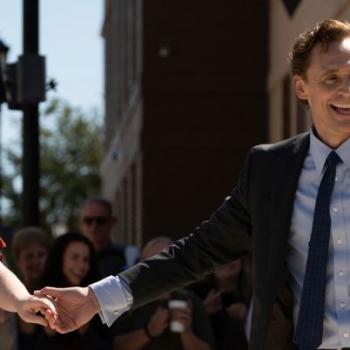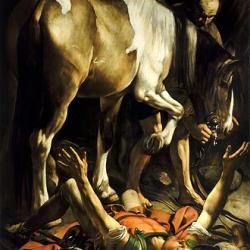Neither LDS chapels nor temples have crosses on their steeples, nor will you find a cross or crucifix inside. Why? The most commonly given reasons run along the lines given by Bruce R. McConkie, one of the LDS Church's apostles, just after the middle of the last century:
The sectarian world falsely supposes that the climax of his (Christ's) torture and suffering was on the cross . . . a view which they keep ever before them by the constant use of the cross as a religious symbol. The fact is that intense and severe as the suffering was on the cross, yet the great pains were endured in the Garden of Gethsemane. (Bruce R. McConkie, Mormon Doctrine 555)
McConkie bases his remark on what Jesus says in the LDS scripture, the Doctrine and Covenants. Speaking of his atoning suffering, he says:
Which suffering caused myself, even God, the greatest of all, to tremble because of pain, and to bleed at every pore, and to suffer both body and spirit—and would that I might not drink the bitter cup, and shrink—nevertheless, glory be to the Father, and I partook and finished my preparations unto the children of men. (D&C 19:18-19)
That is the warrant for our belief that the suffering of the atonement took place on Gethsemane as well as on the cross. In 1975, Gordon B. Hinckley, then also an apostle, gave a different explanation. He said:
I do not wish to give offense to any of my Christian brethren who use the cross on the steeples of their cathedrals and at the altars of their chapels, who wear it on their vestments, and imprint it on their books and other literature. But for us, the cross is the symbol of the dying Christ, while our message is a declaration of the living Christ. (Gordon B. Hinckley, LDS General Conference, April 1975)
Since we understand Christ's atoning suffering to have begun and, perhaps, to have reached its climax in the Garden of Gethsemane, and since we want to emphasize Christ's resurrection rather than his death, we don't use the cross as a religious symbol. Those encompass most of the reasons that Mormons will give if asked about the absence of crosses (though we do use paintings of the crucifixion in our chapels as well as paintings of Christ suffering in Gethsemane).
But it appears that Mormons used the cross in a variety of ways, though not often as architectural ornament, until the early 20th century. Then, influenced by the anti-Catholicism of Protestant America and by our own home-grown anti-Catholicism, Mormons gradually began to feel less and less comfortable with the cross as a symbol. That feeling appears to have become institutionalized by the late 1950s. (A good summary of the history of Mormon use of the cross can be found here.)
I hope we have outgrown our anti-Catholic ideas and feelings. I think we mostly have. But our non-use of crosses has remained the same. As a result, we give apparently post hoc explanations like those above.
In my mind, perhaps the most compelling argument, though one not often invoked, is the brief one we find in the LDS Bible dictionary (an appendix to the LDS edition of the King James version of the Bible): "the Lord has established his own symbols for his crucifixion and sacrifice—the bread and the water of the sacrament (Matt. 26:26-28; D&C 20:40, 75-79)." We recognize and meditate on Christ's crucifixion each week when we partake of the elements of the sacrament (the Mormon term for the Lord's Supper), so we do not need the cross as an object of meditation.
That is an important point: we do not want another symbol to supplant or take precedence over the symbol of the Lord's Supper. But if that argument is an argument against any use of the cross as a symbol, it fails, not least because both the Bible and other Mormon scripture use the cross as the primary symbol of Christ's suffering. Indeed, Latter-day scripture uses the cross more than it uses the Garden or the Lord's Supper:





